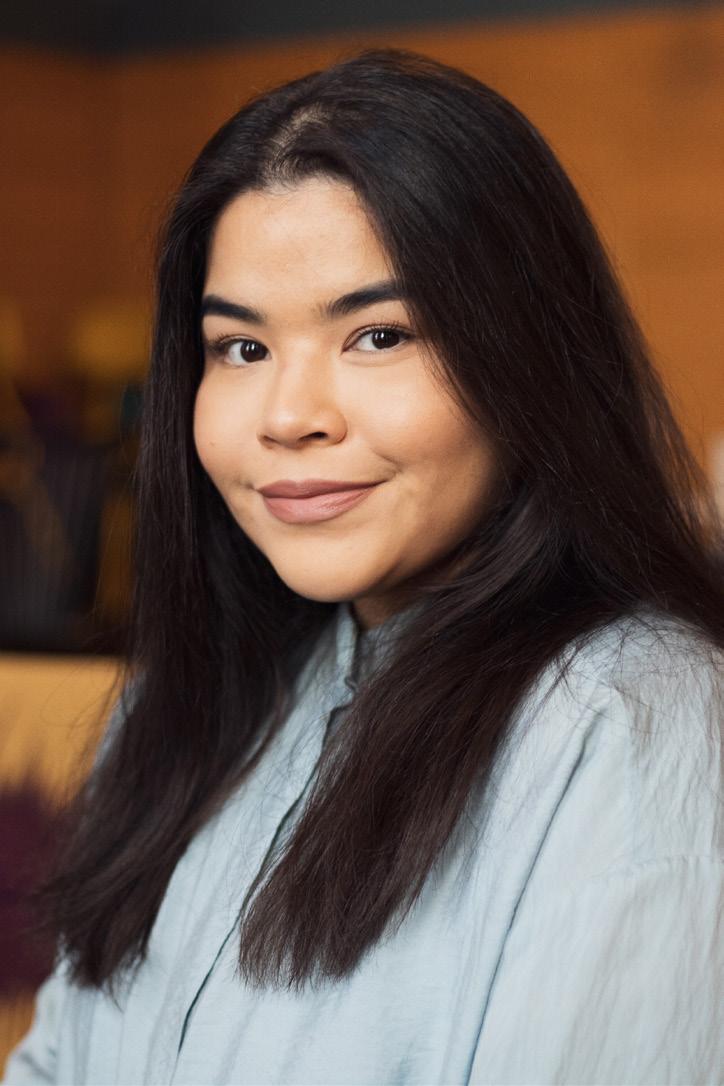
3 minute read
Address from the Student Council President
ÞÝÐING TRANSLATION Julie Summers

Isabel Alejandra Días
Photo: Helga Lind Mar
Advertisement
If the Student Council’s centennial has taught us anything, it’s that more often than not, students must fight the same battles over and over. This year, for instance, we’ve been taking on the student loan system. It’s a fight that has repeated itself many times throughout the school’s history, like in 1976, when students protested a new loan system, and again in 2013, when the Student Council took the Icelandic Student Loan Fund and the Icelandic government to court because of changes to the fund’s allocation rules. The same is true of our efforts in recent months to ensure students’ financial security, which is reminiscent of 2008 to 2010, when measures were needed to address high unemployment and a growing number of students in the wake of the economic crash.
These examples demonstrate that the Student Council is doing critically important work. Looking back on our 100-year anniversary, we celebrate all our victories and let the defeats drive us forward. In reaching such a milestone, it’s only natural to wonder where the future will take us. The coronavirus pandemic has colored every aspect of our lives for almost a year. For some of us, it has cast a shadow on our university careers, while others have never known anything different since beginning their studies. We cannot look to the future without considering the ways in which this past year has impacted us as individuals and as a school community, but the pandemic has underscored one particular issue that can no longer be ignored.
Students have long demanded that lectures be recorded and made available through the university’s learning management system. We have also pushed for a larger selection of online classes. These requests are not just about equality; environmental factors and a desire for more modern teaching methods have also played a large role. The university was perfectly capable of adopting virtual teaching methods, but circumstances last spring semester made it necessary to do so. At that point, it became crystal clear that the school was up to the challenge, given all the progress that had already been made. For example, there’s the digital exam system Inspera, which has generally worked well for students and has made taking exams more efficient, environmentally friendly, and fairer. Other examples include Panopto, which allows instructors to record lectures, as well as Zoom and Teams, which enable distance learning and facilitate communication between students and instructors.
When autumn semester arrived, flexibility was restricted again. The university emphasized distance learning with the option of in-person classes and in-person exams when possible. In most cases, students were required to attend even virtual lectures in real time, and we made no comment on that, but noted that it was still important for instructors to record their lectures. That way, students could access them later, whether to review for exams or take better, more detailed notes. It is, in fact, a key part of the student experience. Our intention is not and never has been to dissuade students from attending lectures in real time, but rather to ensure that all students can access them after the fact. So the argument cannot be that things must be done this way in order to ensure that students attend class. We put a lot of focus on our new learning management system, Canvas, all the features it offers, and having all course materials in one place, and access to lectures is a large part of course materials and must be ensured.
More emphasis must be placed on ensuring lecture availability and categorically refusing a return to old routines. The concept of remote learning means something completely different today and can hardly be considered so far-fetched anymore. The aim of developing a variety of teaching methods is to significantly enhance the quality of education, which will only strengthen the university and make it more competitive on the international stage. The University of Iceland has shown that it has the potential to not only improve teaching methods but even revolutionize them. Quality facilities and other resources for instructor use also promise to improve teaching methods. After all, that is the future: high-tech teaching methods for today’s world.










